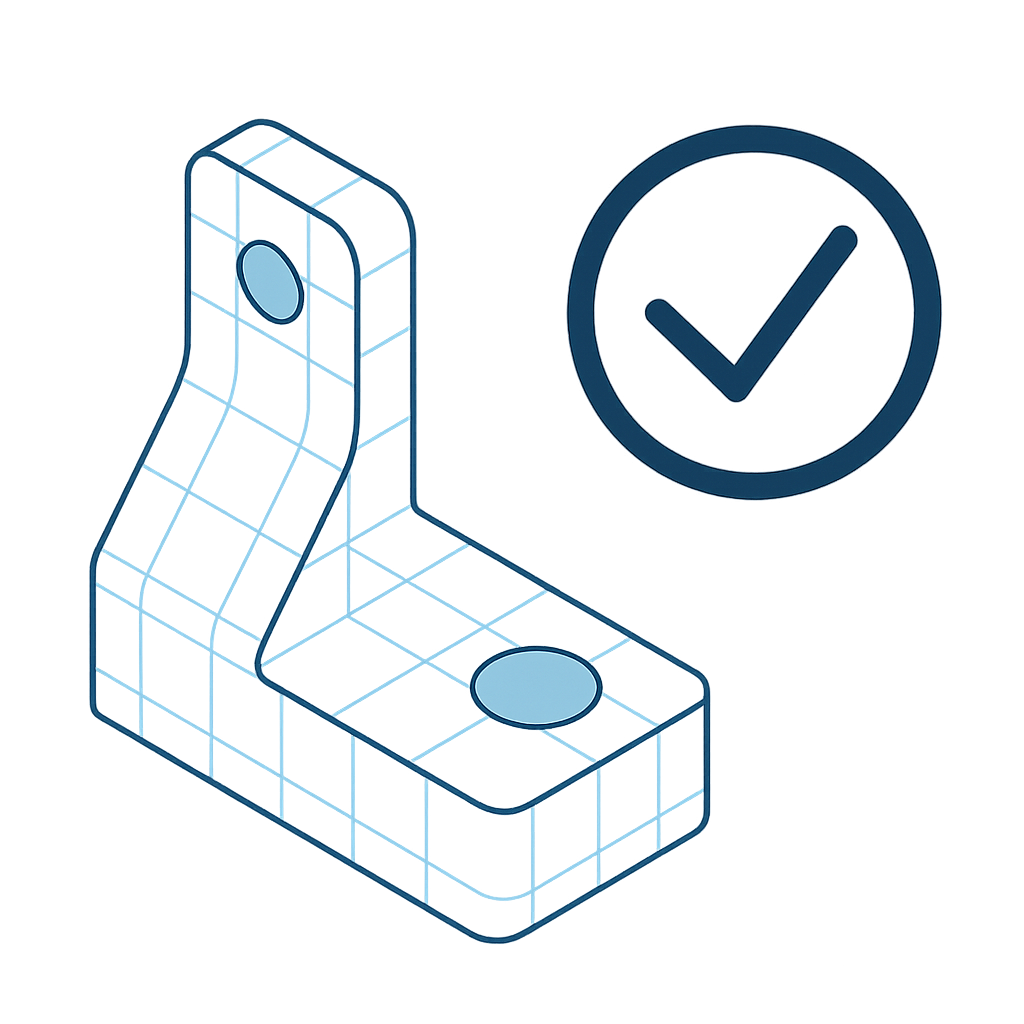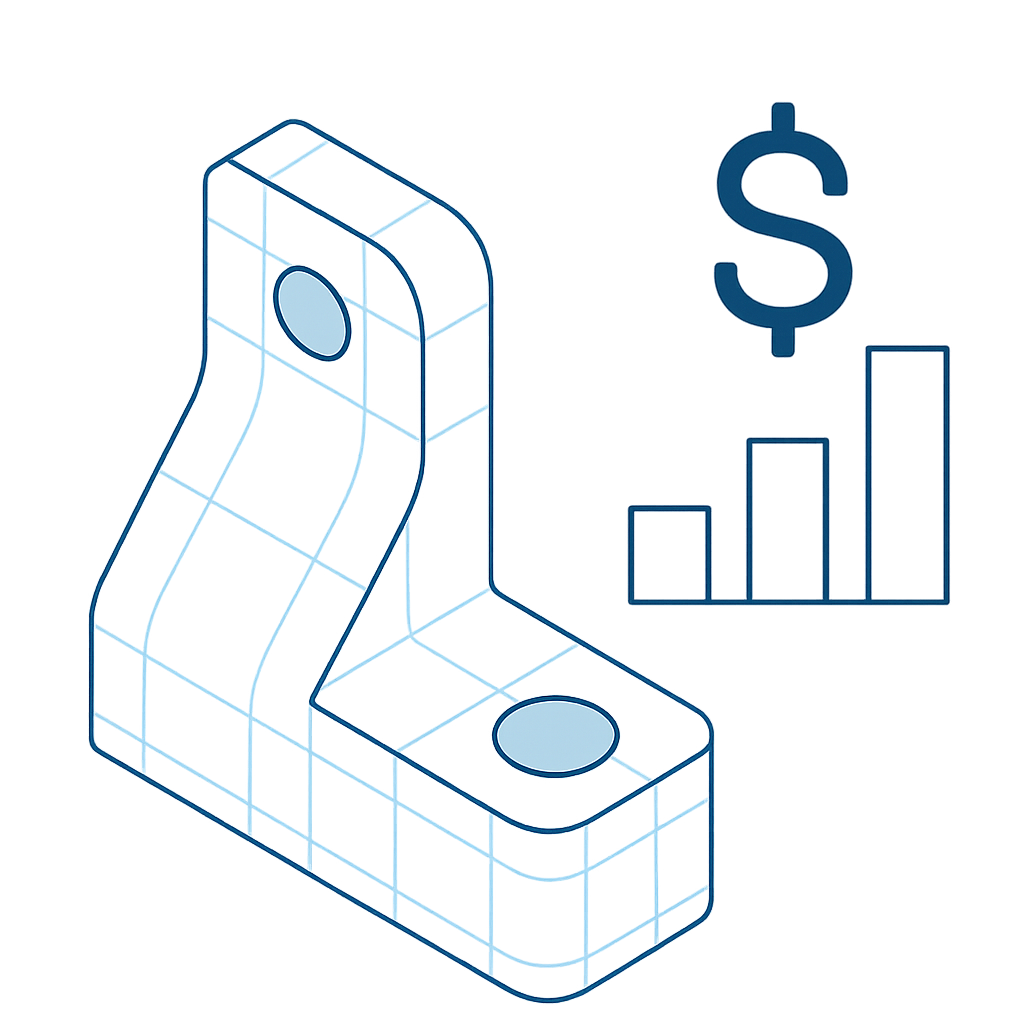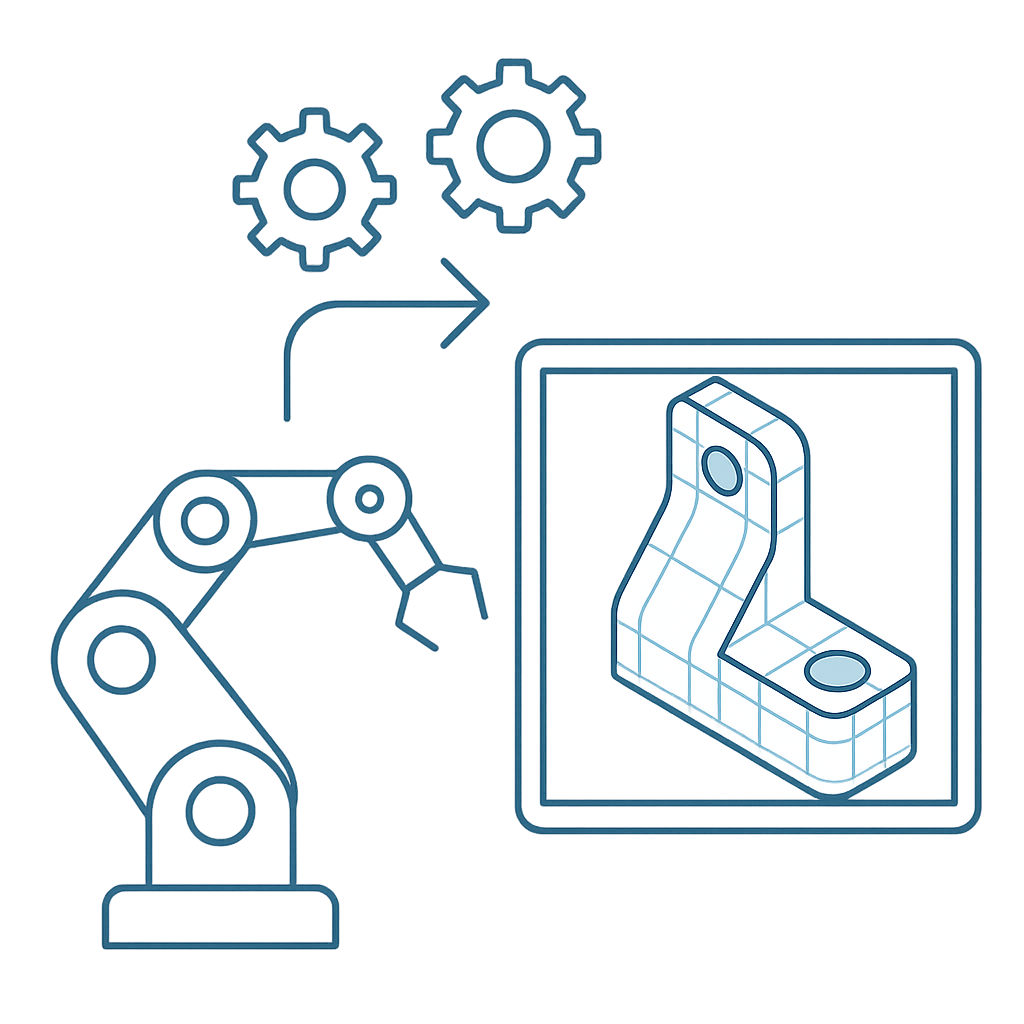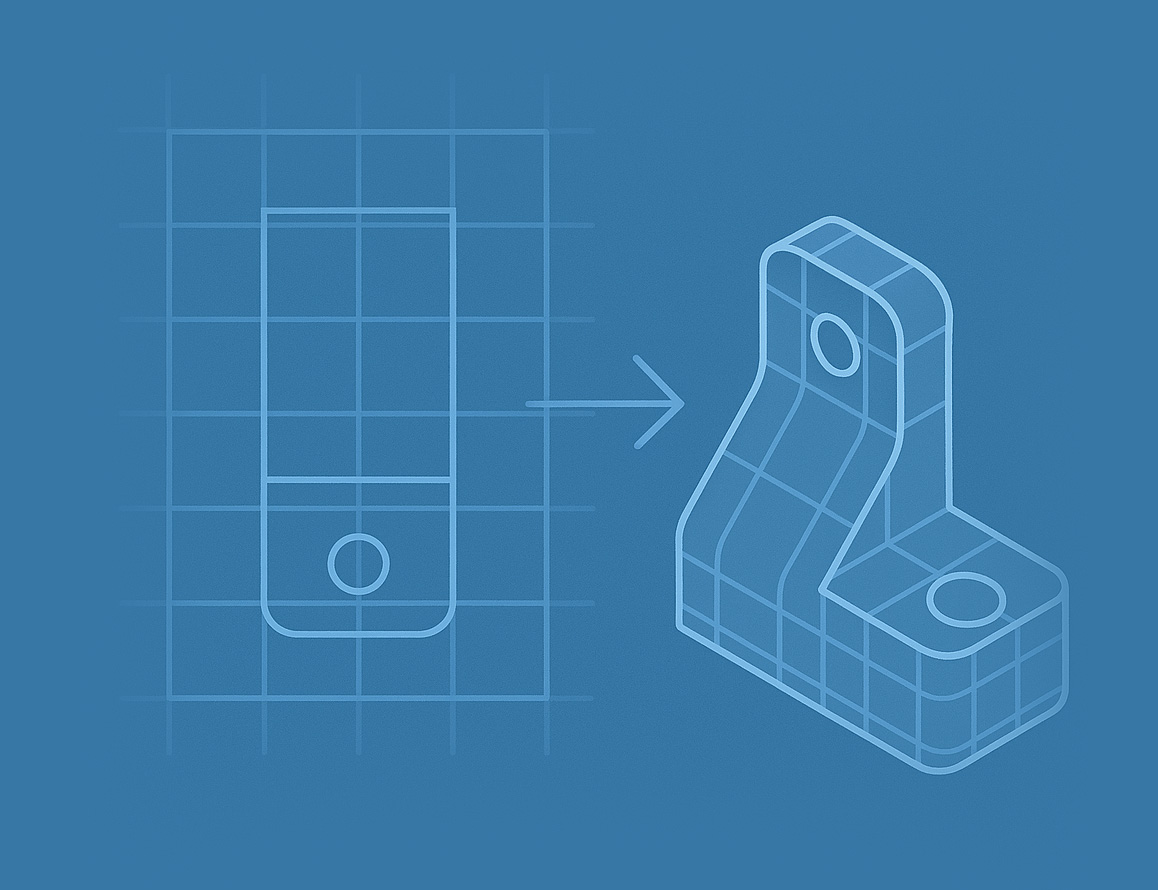Resources
CAD to Cost
Why Leveraging 3D CAD Data Provides a Competitive AdvantageUnlock Competitive Advantage with 3D CAD-Driven Costing
In today’s fast-paced product development environment, companies that can quickly and accurately predict manufacturing costs gain a decisive edge over their competitors. By harnessing the power of 3D CAD models for cost estimation, you unlock new levels of speed, precision, and automation — critical advantages that drive better business outcomes.Why 3D CAD-Based Costing Achieves Both Precision and Speed
Faster Time to Insight
Traditional costing methods often rely on manual calculations or 2D drawings, slow decision-making, and introduce risk. With 3D CAD models, much of the data needed to estimate costs is already embedded within the design. This not only means you can automatically calculate cost impacts in minutes rather than days, but you can get the insights in real time, during the design process. The result is accelerated design cycles and real-time optimization.

Higher Precision, Fewer Surprises
3D CAD captures a complete and accurate representation of the design, not only the geometry/shape but also metadata such as material specifications, dimensions and tolerances, and/or manufacturing processes. This precision enables more accurate cost predictions, dramatically reducing the risk of late-stage engineering changes, project cost overruns, and expensive surprises in production.Beyond a cost calculation, aPriori gives insight into what is driving the costs. A full manufacturing simulation is behind the numbers, including secondary processes, tool changes, cooling times, and the Design Guidance from aPriori gives direct feedback on how to optimize the design.
Automation and Scalability
By connecting 3D CAD models with advanced digital manufacturing simulations, companies can automate the entire cost estimation process. This not only frees up valuable engineering time but also ensures consistent, repeatable results across complex product portfolios — empowering your teams to focus on innovation rather than repetitive tasks.
Learning from the Past:
Why 3D Replaced 2D
The shift from 2D CAD to 3D CAD fundamentally transformed product design. 2D drawings were prone to errors, missing details, and misinterpretations, leading to costly delays and rework. 3D CAD resolved these issues by providing a comprehensive digital representation of the product, dramatically improving communication, accuracy, and design efficiency.
Today, we see a similar transformation in how companies predict manufacturing costs. Just as 3D CAD superseded 2D for design clarity and quality, 3D-driven costing is now replacing outdated estimation methods, enabling smarter, faster business decisions from the very first stages of development.
Today, we see a similar transformation in how companies predict manufacturing costs. Just as 3D CAD superseded 2D for design clarity and quality, 3D-driven costing is now replacing outdated estimation methods, enabling smarter, faster business decisions from the very first stages of development.

The Future is Digital: The Value of the Digital Twin
The integration of Digital Twin technology is pushing these advantages even further. A Digital Twin is a dynamic, virtual representation of a product and its production environment. By linking 3D CAD models with real-time manufacturing data, companies can simulate and predict performance, manufacturability, and cost with unprecedented precision. This creates a data-driven environment where designs are not just 3D concepts; they are enriched with production costs, tooling costs, manufacturability issues, and carbon footprint information, all available to be used to continually optimize for cost, quality, and efficiency.In an increasingly competitive global marketplace, companies that thrive are those that can innovate quickly, adapt instantly, and optimize continuously. Leveraging 3D CAD and Digital Twin technologies for cost estimation is not just a smart move—it’s becoming a strategic necessity.

